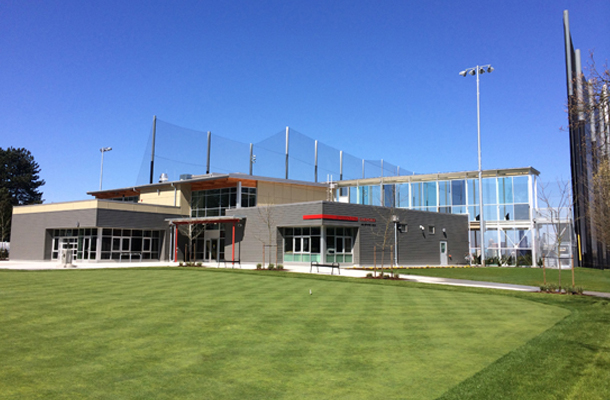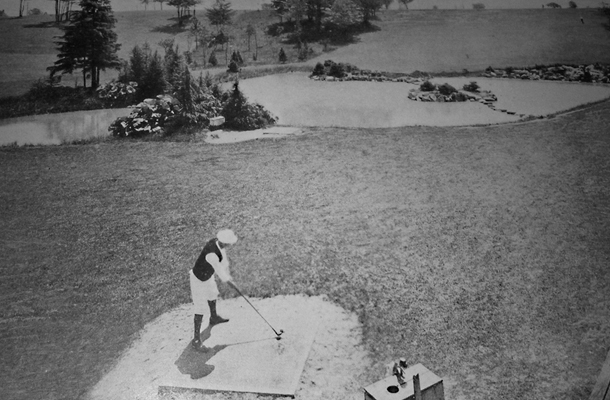Tickets on sale for LPGA major event at Sahalee
Photo by Scott Bisch

By Martin Pool, Special To Inside Golf
This year marks the Centennial of the opening of the Jefferson Park Golf Course, on Beacon Hill in Seattle. Regarded as the first municipal course west of the Mississippi, Jefferson Park, named after Thomas Jefferson, opened for play amid much pomp and ceremony on May 12, 1915.
The origins of the Jefferson Park Golf Course can be traced back to 1907. Edward C. Cheasty, a member of the Board of Park Commissioners, is given credit for being the first to come up with the idea of a municipal golf course in Seattle. Cheasty found an ally in Sherwood Gillespy (whose statue and fountain would welcome golfers to Jefferson Park for years thereafter) and together they convinced the skeptical City Council to build a golf course. They chose the property on Beacon Hill. On the property was the City Stockade (to house criminals) and the City Hospital, then commonly referred to as the “Pest House” as it was intended for persons with contagious diseases.
In October, 1912, the Park Board hired Robert Johnstone, then the golf professional at the Seattle Golf Club, to design the eighteen-hole course. (Note: contrary to numerous websites and citations, there is no evidence that Tom Bendelow, the famous golf architect from Chicago, designed Jefferson Park.).

Construction of the golf course began in earnest in 1913. Lacking budget appropriations, the City turned to its prisoners held on site at the stockade to provide much of the labor for “clearing and grubbing” the land.
The initial course layout measured exactly 6,000 yards. The following diagram, dated Feb. 1, 1915, incorrectly shows the pond located on the 17th hole. The pond was actually located on what was then the 13th hole, but is now the 15th hole. Fees were set. A round of golf cost 25 cents. An annual pass, with locker and clubhouse privileges, could be purchased for $12. Caddies, typically boys aged 12-16 years, earned 50 cents for the loop. A golf lesson from the pro? $1.
The Park Board hired Jefferson Park’s first golf professional in 1915, and by sheer coincidence, he shared the same name as the golf course itself. His name was Joseph Jefferson. Born in Newbiggin-by-the-Sea, England, Jefferson lived on site at the golf course and worked there for 29 years, retiring in 1944.
Two days after the golf course was opened, the Park Board faced its first controversy. Miss Lena Colsky responding to the Board’s policy on restricting women from playing on weekends, protested. On May 14, 1915, she wrote:
“I am of the opinion that women, who are unable to avail themselves of the opportunity of playing golf week days, should be allowed the privilege of playing Saturday afternoons and Sundays. If this is to be a Municipal Golf links I can’t see why a woman’s $12 a year for the up-keep is not good as a man’s and why they shouldn’t be given the same consideration.”
Miss Colsky’s impeccable logic was not lost upon the Board, which, to its credit, reversed its decision and sent a reply dated June 3, 1915:
“I wish to notify you that acting upon the protest which you initiated and which was joined in by others, the Board has voted to rescind the rule whereby women were prevented from using the Municipal Golf Course at Jefferson Park, Saturday afternoons and Sunday mornings, and
hereafter the course will be open to women at all times.”
The public’s response to the opening of Jefferson Park was immediate and astounding.
Nearly 50,000 rounds were played in 1916. It hit the 100,000 mark in 1922 and after the third nine (the “long nine” at that time as it was a regulation 3,100 yards) was completed in 1923, attendance reached an astonishing 174,000 players in 1926.
According to a June 6, 1926 Times article: The average Sunday sees 200 men and women turned away from Jefferson Park because they cannot be accommodated. This is not only during the summer playground period, but it has been a fact since January 1, 1926. Golf’s popularity, and congestion, at Jefferson Park led in part to the building of Rainier Golf and Country Club and Inglewood Golf Club in the early 20’s and spurred on the construction of Jackson Park Golf Course (named after President Andrew Jackson), the second municipal course in Seattle, completed in 1930.
The great Walter Hagen played an exhibition match at Jefferson Park on November 19, 1922 and of Jefferson Park, he wrote:
“I want to go on record right at this point by saying that I have visited forty-eight of the four dozen states of this Union and have played on every municipal links in those states, as far as I know, and, to my way of thinking, there is nothing on the face of this broad land in municipal golf links that compares with the Seattle city course, on which we played yesterday.”
Editor’s Note: Saturday, May 9, 2015, the Northwest Hickory Players will celebrate Jefferson Park’s centennial by hosting a hickory event starting at noon at the course. The public is invited and rental hickory sets will be available. Dress in period clothes and join us for a round of golf as it was played 100 years ago. Contact Martin Pool at fas1863@hotmail.com for more information.